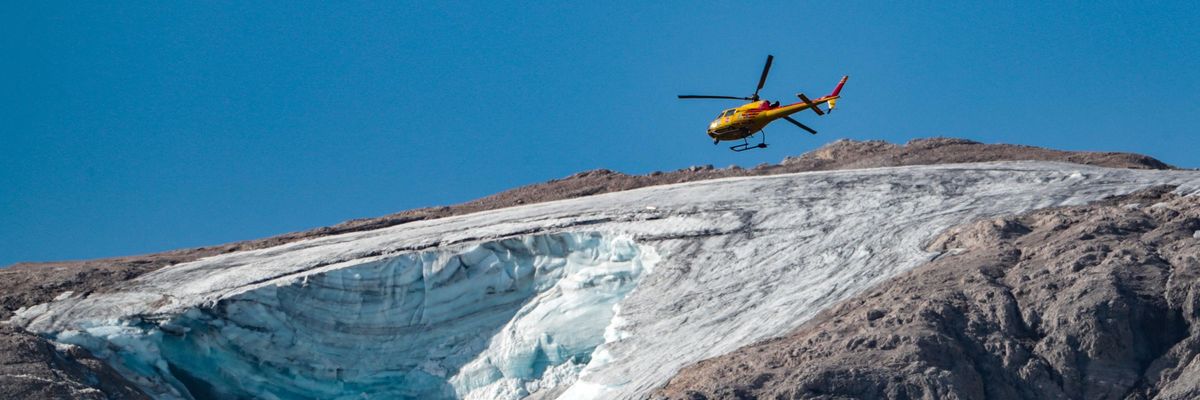Italian Prime Minister Mario Draghi joined scientists in pointing to the climate emergency as the cause of a deadly glacier collapse in the Italian Alps on Sunday afternoon, saying policymakers must act to ensure avalanches don't become a more regular occurrence.
The collapse of the glacier in the Marmolada mountain range in the Dolomites "certainly depends on the deterioration of the environment and the climate situation," Draghi said at a press conference following the disaster, which was confirmed Monday to have killed at least seven people.
"Combined with the unusually high temperatures across the region over the summer, glaciers are melting fast."
"Today Italy weeps for these victims," the prime minister added. "But the government must think about what has happened and take steps to ensure that what happened is unlikely to do so again or can even be avoided."
In addition to those killed, at least eight people were injured by the collapse, which happened near a popular climbing route, and 14 were still missing as of this writing.
A huge chunk of the glacier broke off and slid down the mountain during a heat wave that's hit the region earlier in the year than normal. Meteorologists have recorded temperatures of 50deg Fahrenheit in the Marmolada mountain group in recent days.
Jonathan Bamber, director of the Bristol Glaciology Center at University of Bristol in the United Kingdom noted that the Dolomites "experienced a drought throughout the winter with very little snowfall."
"Combined with the unusually high temperatures across the region over the summer, glaciers are melting fast," he said, adding that high European mountains are "an [increasingly] dangerous and unpredictable environment to be in."
Poul Christoffersen, a professor of glaciology at the University of Cambridge, called the collapse "a natural disaster linked directly to climate change."
"High elevation glaciers such as the Marmolada are often steep and relying on cold temperatures below zero degrees Celsius to keep them stable," he explained. "But climate change means more and more meltwater, which releases heat that warms up the ice if the water re-freezes, or even worse: lifting up the glacier from the rock below and causing a sudden unstable collapse."
Water at the base of the glacier "and increased pressure in water-filled crevasses are probably the main causes for this catastrophic event," said the Alpine-Adriatic Meteorological Society.
The United Nations Intergovernmental Panel on Climate Change (IPCC) warned in a recent report that melting ice and snow is one of 10 major threats that humans will need to contend with due to the climate crisis.
The glacier that collapsed Sunday shrank by 30% between 2004 and 2015 according to a 2019 study by the National Research Council in Italy.

